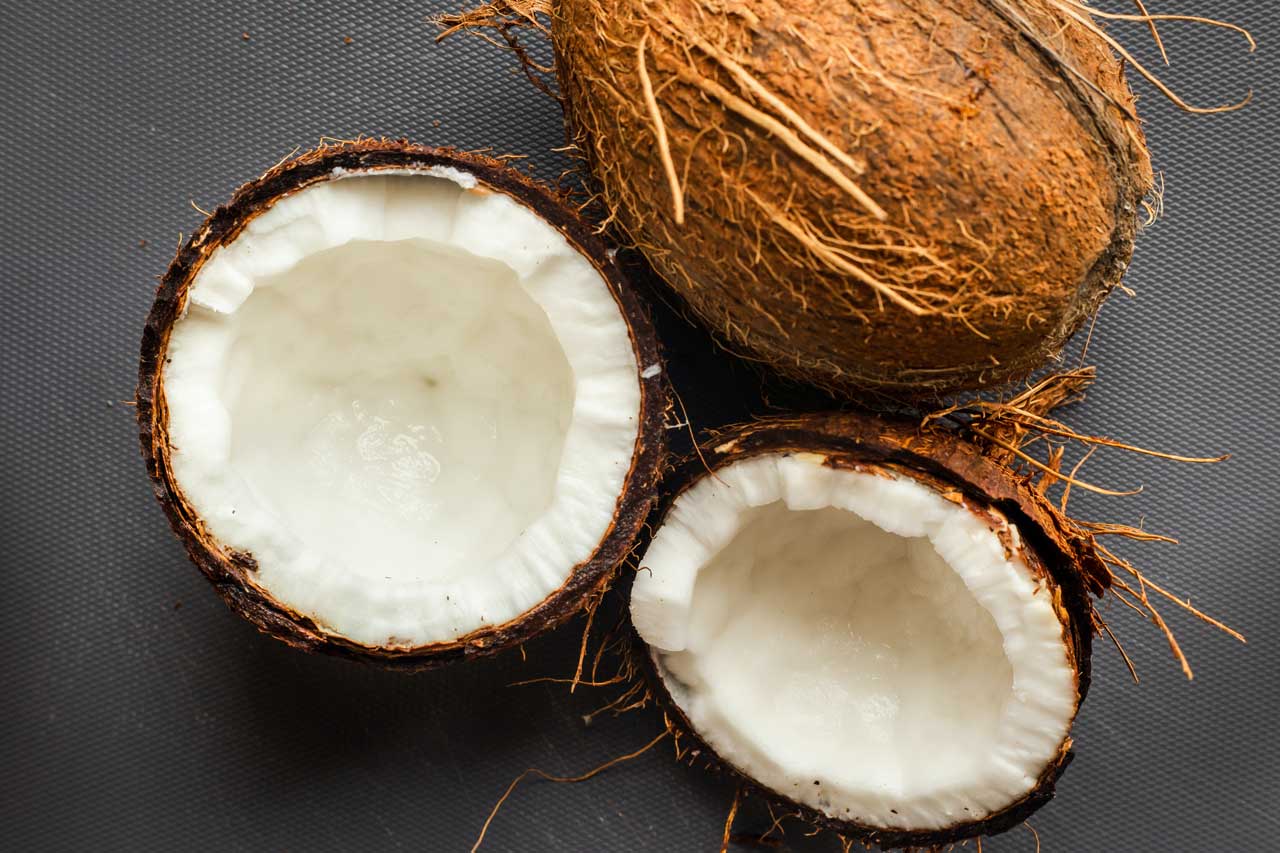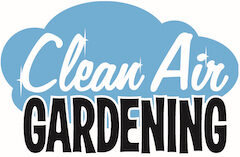
Savvy gardeners are always on the lookout for ways to optimize their soil conditions.
At Clean Air Gardening, we’re here to help you understand the latest and greatest options.
One helpful material you may have heard of is coconut coir. This natural product has been getting noticed by more and more gardeners in recent years.
But does it live up to the hype?
What is Coconut Coir?
Coconut coir, also known as coco coir, coir fiber, or coco peat, is the natural fiber found between the shell and the outer coat of a coconut.

Coir of coconut is the outer husk layer that is often considered a waste product. However, the fibrous quality of coir makes it useful for products such as rope, fishing nets, mattresses, and doormats.
Coconut coir fiber can also help to provide a healthy growing medium for plants. Therefore, coir has gained popularity in recent years among gardeners.
What Form is Coconut Coir Sold In?
Coconut coir is typically sold as a compressed brick. You might also buy it in starter discs, chips, or loose-form in a bag.
At gardening retail locations, you’re most likely to see coco coir in brick form. This packaging is super efficient because the coir will expand to many times its size after you add water.
To transform the brick into useful material, submerge it in a large container partially full of water. Weigh it down with a concrete brick to keep it under the water while it soaks.
As the coir fiber soaks, break it apart with your fingers.
Useful tip: you don’t need to prepare an entire brick all at once. You can break it up into pieces to use as needed over time. Remember, the bricks transform into a surprisingly large amount of material after you add water.
How is Coconut Coir Used in Gardening?
Coconut coir is used in gardening as a growing medium or a component in a soil mix.
Water retention is the key to what makes coir fiber so useful as a growing medium. That’s because coconut coir can absorb up to ten times its weight in water.
The excellent water retention properties of coir help keep plants hydrated.
So what are the specific gardening uses of coconut coir? It’s used as a hydroponic growing medium, potting soil component, garden bed soil component, seed starter medium, and composting additive.
Now, let’s have a look at three great benefits of using coco coir in your gardening.
Coconut Coir is Great for Seed Starters and Potting Mix
Mix coconut coir with compost (50/50 ratio) to develop a great seed starting mix. This will provide a very high germination rate for your seeds.
Because coir retains water so well, your starters will require less frequent watering. That means less stress on the plant and less labor for you.
Coconut coir is also a great addition to your potted plant’s mix or raised garden bed soil.
Here’s a great formula for a high-quality soil mix:
- 40 percent dirt or soil
- 30 percent compost
- 20 percent coconut coir
- 10 percent worm castings
The coir will help with your soil’s water retention and aeration. It’s also earthworm friendly but doesn’t attract insects.
The pH level of coir fiber is typically between 5.5 and 6.8. That’s close to neutral, and near the ideal vegetable growing range of 5.0 to 7.0. Therefore, coir fiber mixed with other components is generally a good fit for an overall pH level.
Coconut Coir is Great for Hydroponics
Coconut coir is one of the most commonly used materials by hydroponic growers. Hydroponics refers to growing plants without soil. Instead, mineral nutrients in an aqueous solvent provide the growing medium.
Coco coir has been referred to as the “gateway” growing material for gardeners interested in hydroponics. That’s because it’s a soil-free plant growth medium that still has a familiar look and feel to the soil.
You can practice hydroponic gardening with coconut coir without purchasing a full hydroponic system. However, hydroponic gardening is complex, so do your homework before getting started.
Here’s a great video tutorial on coconut coir hydroponics:
Coconut Coir is an Environmentally Friendly Choice
Coconuts are grown for their edible portions. Although there was some historic use of coir for ropes, the inedible portions of coconuts have mostly been considered a waste product in modern times.
That’s been changing recently as people begin to develop the potential of coir, especially for gardening.
A coconut tree can produce up to 150 coconuts in a year. That’s a lot of potentially wasted coir material that can be repurposed!
Regarding sustainability, it gets better: coconut coir is a durable material. It can be reused several times through different growth cycles.
Finally, coconut coir is a useful choice for gardeners that want to steer clear of soil components that contain animal products. It’s also considered an alternative to using peat moss, which is great for your garden but arguably not so great for the planet.
So, this product gets high marks as an environmentally friendly choice for your garden.
What are the Downsides to Gardening with Coconut Coir?
While coco coir has earned its growing popularity, make sure you’re aware of its downsides too. Here are the primary drawbacks and issues to keep in mind:
- Coconut Coir is inert. That means it does not contain nutrients. Therefore, it won’t supply your plants with everything that they need to thrive.
- Water, time, and money. Coconut coir bricks aren’t sold ready for use. You’ll need to use water and spend some time hydrating and breaking up the material. You can also buy bagged mixes with coir, but these tend to be a bit expensive.
- Salty. Coconut trees are grown near oceans and some salt will stick around in the coir unless the product is sufficiently soaked in freshwater before processing. Salt in the coir will harm your plants, so avoid too-good-to-be-true prices and read up on the brand you select before purchasing.
Alternatives to Coconut Coir
When it comes to nourishing your garden plants, there’s a lot of options out there. Coco coir is certainly a useful product to be aware of.
Coir is often compared to peat moss, a similarly functioning growing medium. However, peat moss is environmentally controversial, because it’s a limited resource harvested from bogs and wetlands.
When it comes to products that we simply love, here are our two favorite soil additives that you should definitely consider:
- Fish Meal Organic Fertilizer is a complete plant food that makes an excellent fertilizer for flowers, vegetables, and lawns.
- Bat Guano Organic Fertilizer is harvested sustainably from the Bracken Bat Cave in Central Texas. Bat guano is another fertilizer that plants absolutely love.
Now that you know the basics of coconut coir, you can decide if you’d like to incorporate it into your gardening strategy.
At Clean Air Gardening, we aim to inform and equip gardeners.
Shop our selection of must-haves for the garden, lawn, composting, and more.
We’ve also got you covered on all sorts of gardening topics. Read more.
Featured image: unsplash by Louis Hansel



